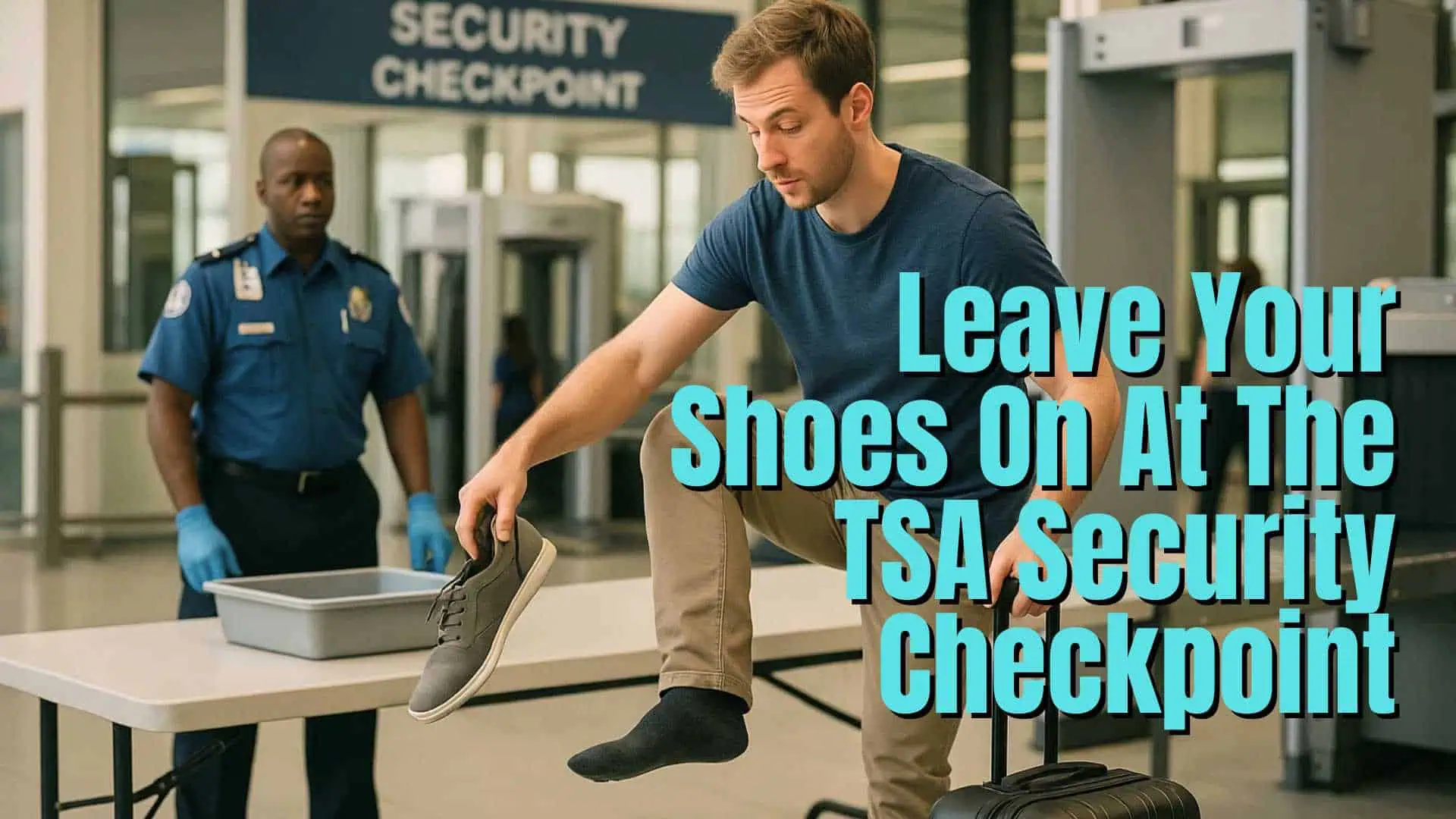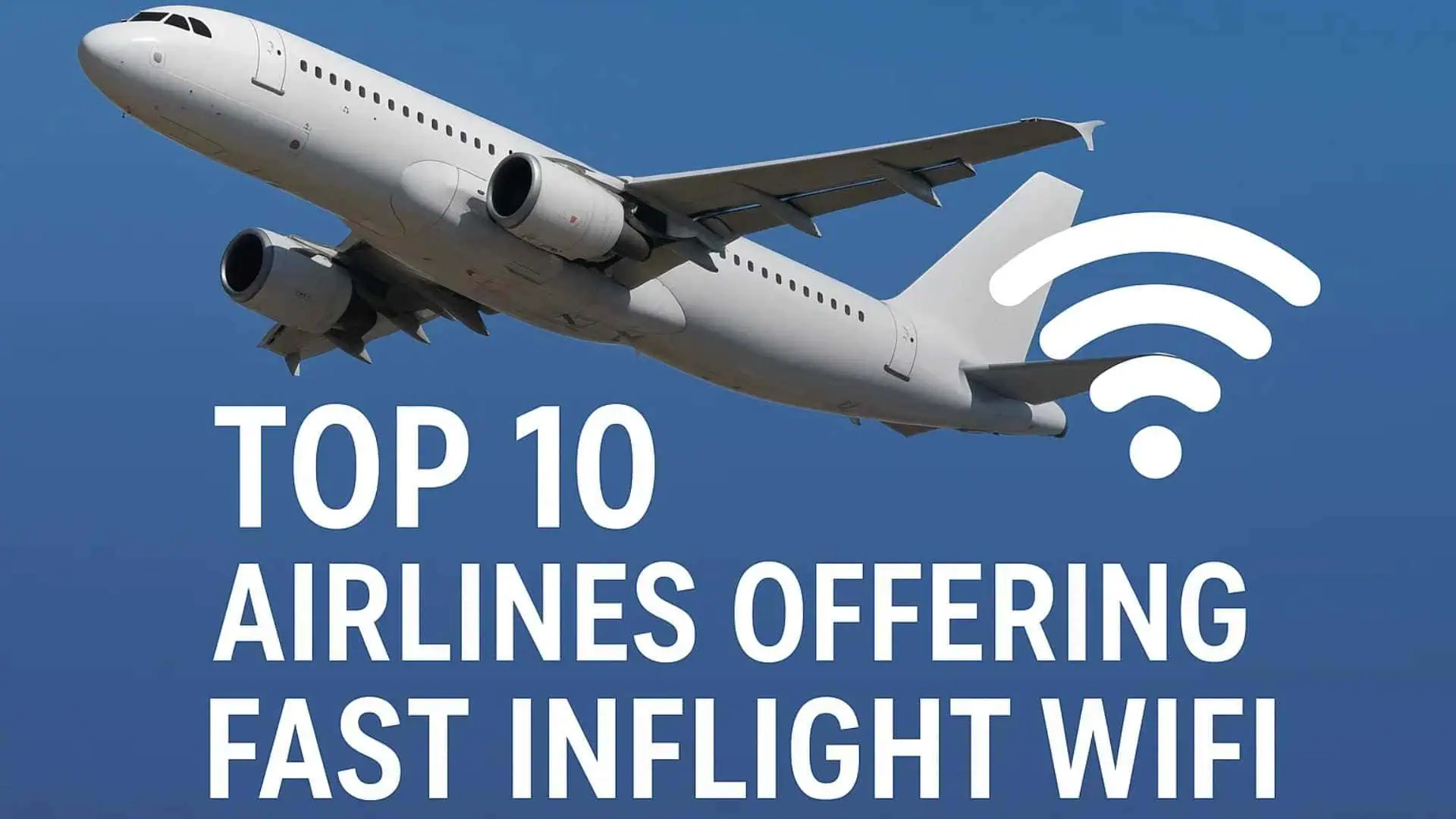With the proper precautions, you can wear your contact lenses on your plane journey and not have to experience any discomfort from the dry air and cabin pressure in flight.
Wearing contact lenses makes for hassle-free travel, especially on long journeys. While you usually don’t think twice before you wear contacts for road travel, you might wonder, ‘Can you wear contacts on a plane?’
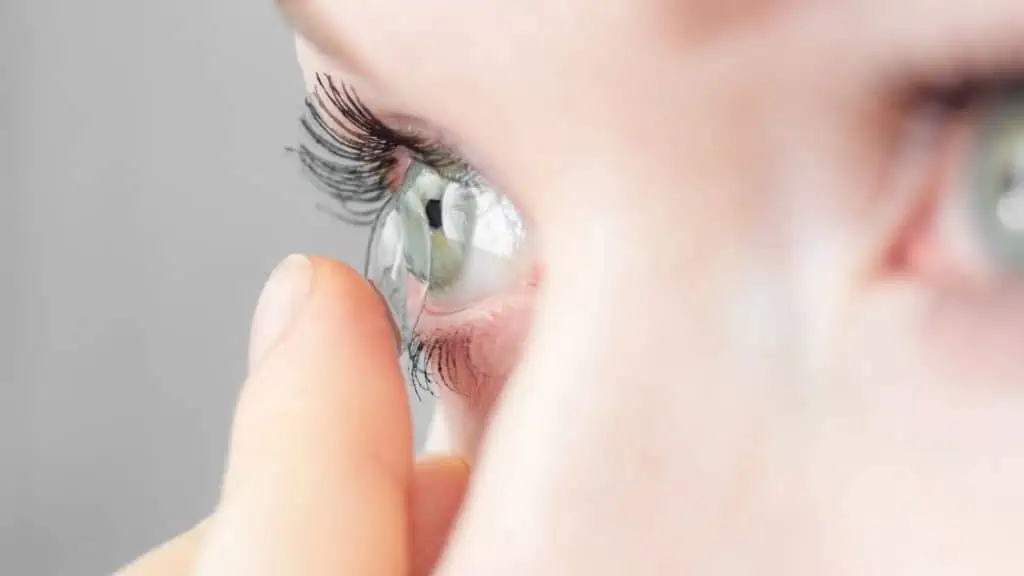
The Quick Answer: You can wear your contacts on a plane. However, it might be better to have your glasses on for long-haul flights instead, should you doze off.
When cruising at high altitudes, the airplane cabin experiences reduced atmospheric pressure, humidity, and oxygen, making the air dry. So if you’d like to have your contacts on, here are a few things to keep in mind.
Contents
Can You Fly With Contact Lenses On?
Firstly, many pilots wear contact lenses when flying so that is a pretty good indication.
However, contact lens wearers could experience eye discomfort and dehydration due to the cabin’s reduced air pressure and oxygen.
Your contacts may feel uncomfortable and tight; in the worst-case scenario, it could lead to microscopic tears in the cornea.
But then, these are all may and could happen scenarios. Wearing contacts on a plane doesn’t necessarily have to result in this. After all, many airline pilots and flight attendants wear contact lenses without a problem.
You could still fly comfortably with your contacts on by taking a few precautions, like having your rewetting drops handy and skipping the in-flight nap.
However, if you’re uncomfortable having your contact lenses on after a while, you could always opt for glasses instead. So, pack your glasses in your hand luggage just in case you want to switch.
Useful Tip: Opt for daily disposable lenses when traveling. These are typically healthier and more comfortable for the eyes. You can also avoid needing cases or solutions at all.
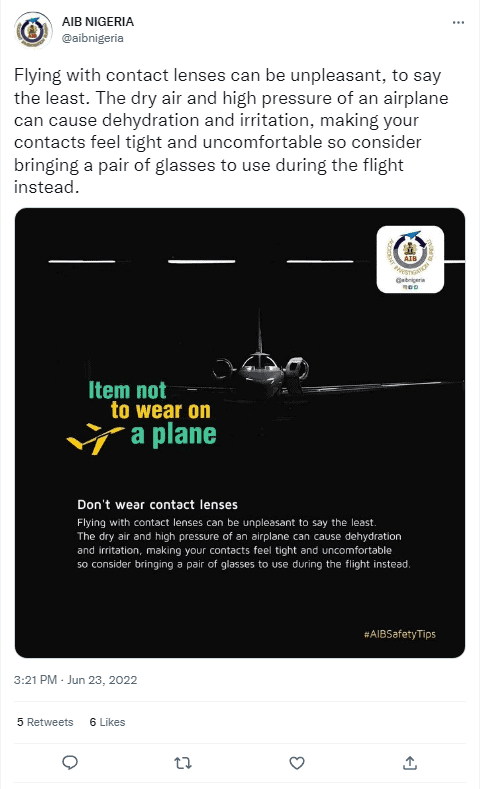
Can You Sleep With Contacts on a Plane?
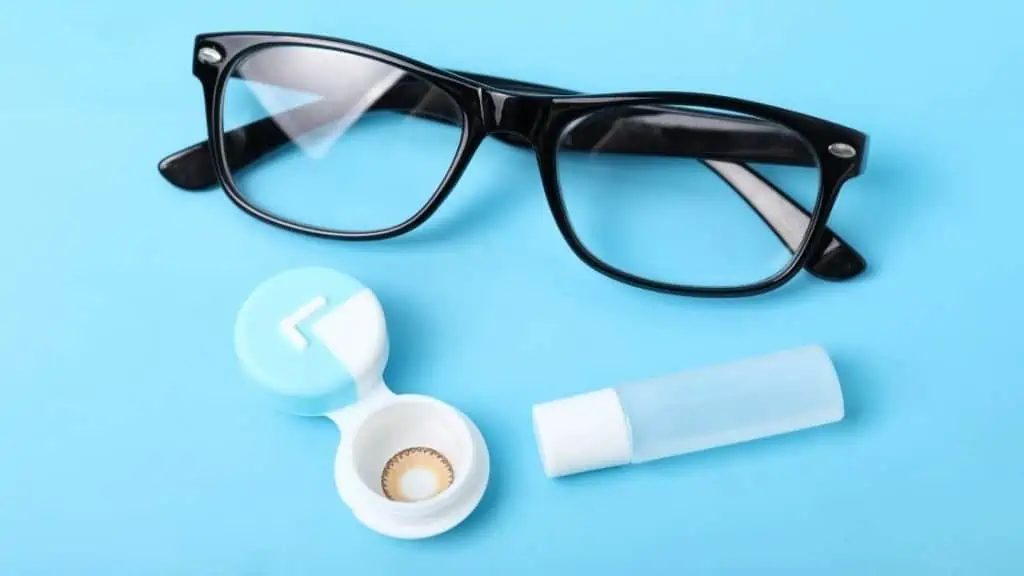
It’s common to take a nap on a long-haul flight to pass the time. But sleeping with your contacts is a big no while traveling on a plane, just like in regular times.
Sleeping with your lenses on could make your eyes itchy, irritated, and sore – resulting in an eye infection. It could even cut off oxygen to your eyes and cause damage to the cornea, resulting in permanent vision loss.
If you’d like to sleep on your flight, have a case filled with solutions handy in your carry-on. This way, you can easily remove your contacts and store them safely.
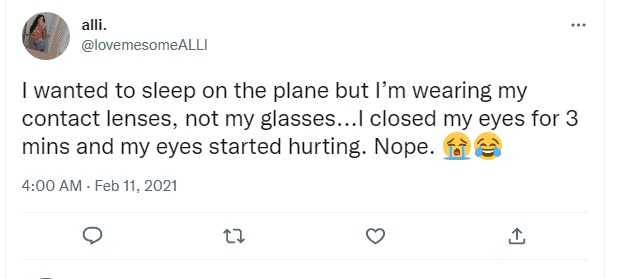
Useful Tip: Pack two extra contact lenses if you damage or lose your current pair. Also, get your glasses in your carry-on bag to switch if you remove your contacts mid-air.

Can You Bring Contact Solution on a Plane?

The Transport Security Administration (TSA) is pretty strict about liquids in carry-ons at airport security.
While carrying a bottle of rewetting drops for lens wearers in hand luggage is essential, going by TSA’s liquids rule, it shouldn’t be more than 3.4 ounces (100 ml).
On the brighter side, contact lens solution is deemed a medically necessary liquid by TSA. You could carry more than 100 ml of it in your hand luggage, ensuring you declare it to the TSA officers at airport security. But then, would you need more than 100 ml of solution for your flight journey?
Instead, you could pack a travel-sized bottle of solution and rewetting drops and place it in a zip-lock bag before placing it in your carry-on bag. This will also avoid any spills in your bag.
Anything more than 3.4 ounces can be packed in your checked bags, preferably well-sealed, to avoid any undesirable spills.
Useful Tip: Avoid transferring contact lens solution from a larger bottle to a travel-sized one – it could cause contamination.
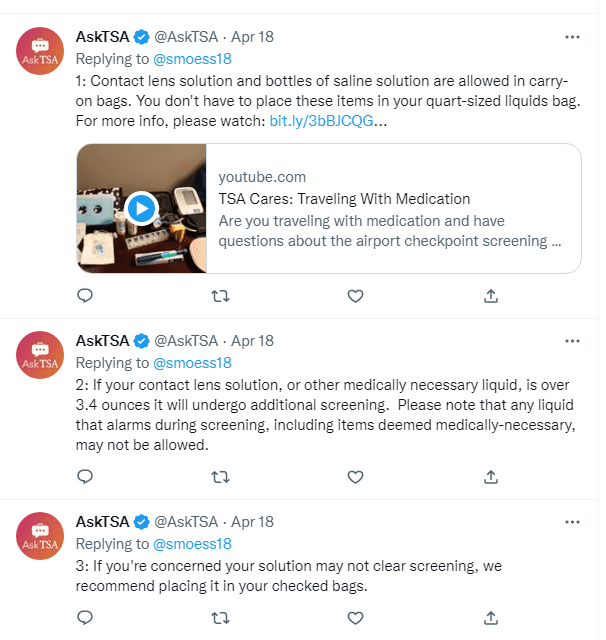
How to Pack Contact Lenses When Flying?

It’s always essential to have a backup if you’re a lens wearer. This includes packing extra pairs of contact lenses, lens cases, lens solutions, and rewetting drops.
TSA allows contact lenses in both checked and carry-on bags. So it’s the solution and drops you need to worry about.
Here’s how you can pack your contact lens essentials when flying:
- Pack a precautionary pair of lenses in your carry-on bag for easy access.
- Keep a travel-sized bottle of rewetting drops and lens solution in a quart-sized bag in your hand luggage.
- Pack any bigger bottles (more than 3.4 ounces) of lens solution and rewetting drops in sealed bags in your checked bag to use on your stay at your destination.
- Have one (or many) cleaned contact lens case, with each side filled halfway with contact solution and tightly closed lids, in a zip-lock bag in your purse or backpack.
- Pack your glasses in your carry-on should you want to remove your lenses.
- Carry your lens prescription; it’ll be handy if you have to purchase new ones at your destination.
- Keep hand sanitizer in your hand luggage for hand hygiene before inserting or removing contact lenses.
- A compact mirror in your carry-on will be handy; you could avoid going to the bathroom on the flight to manage your contact lenses.
- Bring one-day disposable lenses instead of reusable ones when traveling to avoid needing solutions.
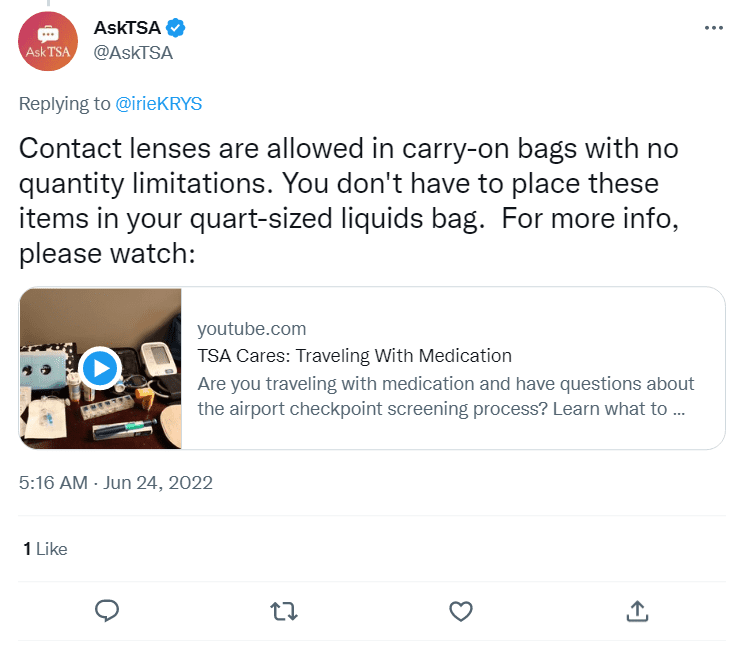
Summary
It’s pretty safe to wear contacts on a plane without any hassle. Have your case, solution, and rewetting drops in your carry-on bag. Although, if you’re thinking of taking a nap on your flight, it would be best to switch to glasses for eye safety.
You could drink plenty of fluids during your journey to prevent your body from dehydrating. Eight ounces of water (not caffeinated drinks or alcohol) for each flight hour should suffice.
Other Air Travel Articles
It’s natural to be curious about things you can and can’t do on a plane. Here are some other helpful air travel articles you can find:
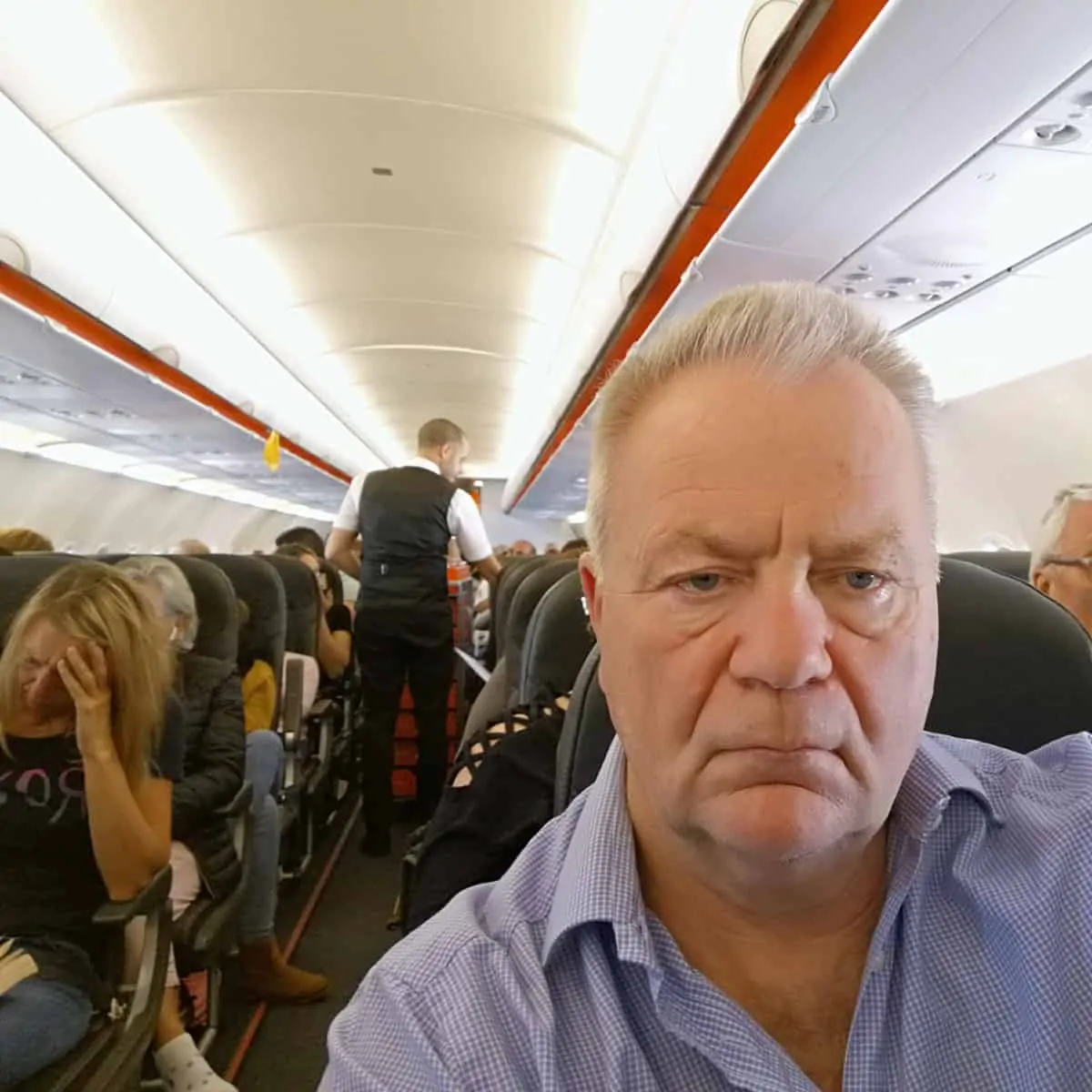
I have been traveling around the world by air since the early 70s and living overseas too. I worked for British Airways for a number of years and I am also a private pilot. About Me
